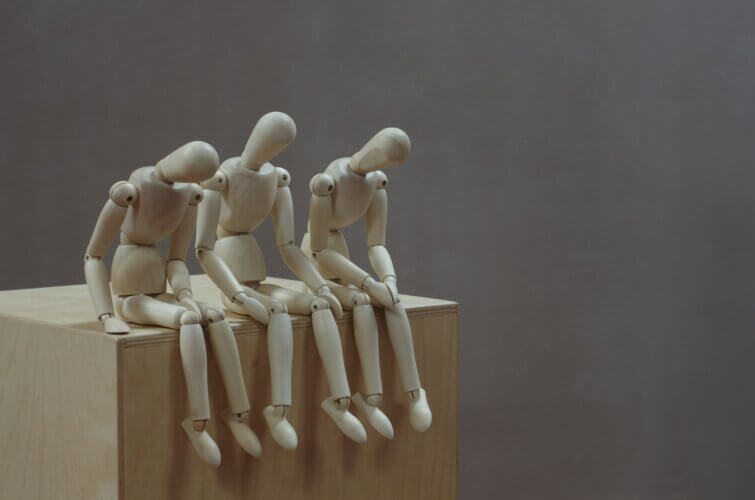A few days ago, I was on a call with a nationally known movement activist and fellow Black woman who has been in the trenches of the anti-racism movement for as long as me, if not longer. We talked for a while about how, as we find ourselves growing older in this work, our views and approaches to the work have also shifted. Namely, the need to find joy external to our work and to create time to rest—because, frankly, the last decade-plus of movement work has been tiring.
As I have shared before, I went into full-time movement work in 2014, when I became the executive director of Community Change Inc. Over the last decade, I have seen many changes in how we do things as the work itself has increased with the turbulent political climate and the use of social media as a vital tool in the work.
While social media has allowed us to grow movements by amplifying messages and creating awareness, what it hasn’t done is to increase the number of long-term workers beyond the superficial—the visible reach of social media. As a result, since 2020, many long-time movement folks have stepped back. leaving us with movements that are fractured, in tatters, and increasingly unstable and unsustainable.
In reflecting on that call, I realized that many of the ground-level activists that I met early in my tenure in Boston are no longer active. In most cases, they burned out, were priced out of Boston, or—if their lives shifted with partnership and the arrival of kids—they no longer could afford to be engaged in the work. Reason for that last point being that many grassroots movement organizations such as my own cannot offer them benefits or salaries commensurate with retaining experienced movement workers.
Very few who worked with me or for me from 2014 to 2020 are still going full throttle in the work, if at all. And those of us who are still hanging on are exhausted. This is not just a Boston/New England movement issue; it is a movement issue. Nationally.
While there is always a surge of newer and younger activists coming into the pipeline, with many being introduced to causes and campaigns primarily through social media, it has meant current organizing strategies lack the relational and strategic organizing lens necessary to achieve wins beyond visibility. There is also a stark lack of continuity without the intergenerational lens.
This means as we dance toward the 2024 presidential elections, we are seeing real disconnects in movement spaces that increase the likelihood that Trump will win again. While there is a segment of movement activists who feel that Biden’s unwillingness to demand a ceasefire in Gaza is worth him losing, where are the coordinated efforts to protect people—particularly marginalized people—should Trump rise again?
Organizing requires strategy and visioning. It is why the right wing mops the floor with us and why many of us were unprepared for the fall of Roe v. Wade. We are not good at looking down the road or, in many cases, reading the room.
It also means that our fractured movement grows even more fractured as newer and younger activists seem unwilling to acknowledge the real exhaustion that those who spent the past decade in the trenches are feeling.
No one in my circles, including myself, is without care and concern for our Palestinian brothers and sisters. But many of us, myself included, are exhausted after the Trump years, COVID, and the daily work of movement. As a result, our current work is not as visible and not respected because somehow we have lost our knowledge that the people in the background are often doing the work that allows our visible people to progress. Rosa Parks and countless unnamed Black women who strategized were just as important as Martin Luther King Jr.
Except in today’s world, too often our visible movement leaders are co-opted into the machinery we seek to dismantle by the insistence on becoming brands. Visibility creates brands, corporations, and deals. Those things, while enriching personally, rarely will lead to collective liberation.
The same machinery that exalts some to visibility also hides the many who stay in the trenches—underpaid, uninsured, and exhausted.
If we are serious about the next iteration of movement work in the coming weeks and months and years ahead, we need to get serious about acknowledging the very realness of activist fatigue and how we can create healing for those who are exhausted, as well as care for our movement comrades to keep people in the work.
We are fighting forces that have been waging a largely unseen war for a good 50 years now; they are looking at how all the pieces are connected and they always have been (which is why the right focused so much and so long on local politics as well as state and national), and they have the upper hand in many ways right now. We cannot afford to be a movement that only focuses on the most visible needs of the moment. What is happening in Gaza is unconscionable—at the same time, though, we need to be able to survey the terrain closer to home as the ramp-up to take us back to the era of Jim Crow and patriarchy and more proceeds full steam ahead with little pushback.
Now more than ever, we need the collective to work together and create a space for all according to our abilities, while also shoring up our resources to care for our comrades. As for individual activists and exhaustion, never feel bad for stepping back and caring for yourself—the goal, though, should be to return to the arena in whatever capacity that you can.
If this piece resonated with you, please consider a tip, or become a monthly patron, if you aren’t already. I offer my work freely, to ensure that it is accessible to all but if you have the means to support it, please do so. Remember, I do work with groups and organizations, if you want to work with me, please reach out for details.
Image by Marco Bianchetti via Unsplash





